Watercolor: One of the lowest cost art hobbies you’ll find
Have you been put off learning to paint because you don’t fancy forking out for all the supplies you’ll need?
What you need to know is that realistic watercolor painting is one of the best value, cheapest art hobbies you can find.
The per-painting cost is really low.
The cost per hour spent painting is INCREDIBLY low.
For examples of realistic watercolor, check out my portfolio.
Comparing costs with other styles and paints
Recently I decided to start experimenting with acrylics. After years of painting realistic waterclour I was in for a bit of a shock when it came to costs!
As I reflected on just how cheap realistic watercolour was in comparison, these were the things I noted. Oh and I do enjoy using acrylics, I’m reflecting here purely on the cost comparisons of the different mediums:
1. Diluting using water, means watercolours are WAY better value per gram of paint
The teeny tubes of watercolour you can buy (you can get them as small as 5ml) might seem expensive considering the small amount you get, but remember, with watercolor you dilute – a LOT. I recommend colours that are rich and dark, so you can actually achieve a massive range of colours from just one paint by adding varying amounts of water. Cheap old water. And for the palest colours we’re adding massive amounts compared to the quantity of paint used. My 5ml (0.17 Fluid ounces) tubes last me months and months, if not years, and I paint daily.
In comparison, with acrylics you really need to dilute with a special fluid & guess what, it’s not cheap!
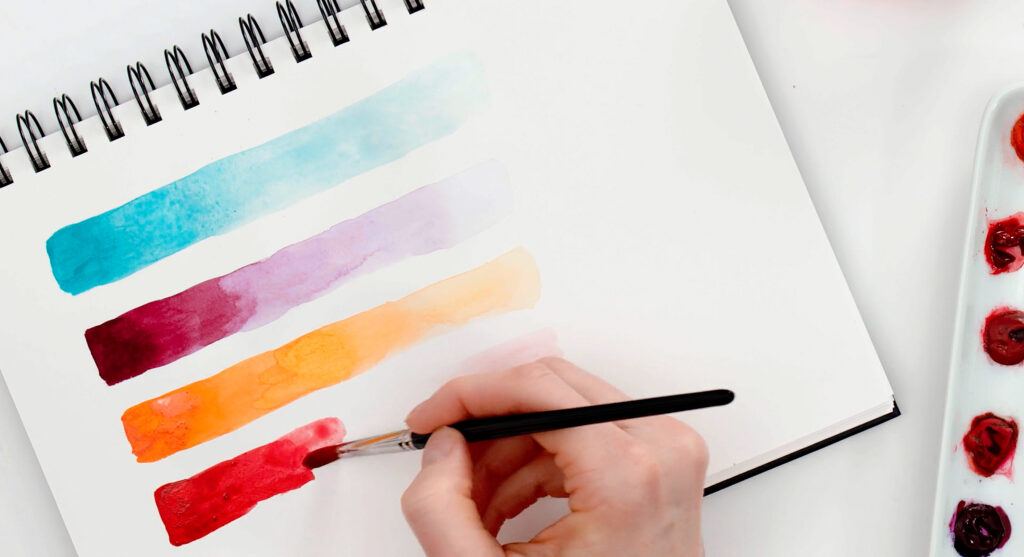
2. Being able to use the paints DRY makes watercolours even MORE economical and there’s ZERO waste.
I squeeze my paints out onto my palette – a small amount at a time. And I let them dry off. They can be re-activated with a damp or wet brush each time I paint. Not only does this mean there’s NO wasted paint at the end of a painting session, but using the paints dry makes them last longer. You get less on your brush each time, so you hardly ever use more than you need.
In comparison, with acrylic paints, once they’ve dried, they can’t be used. That’s it. And so they’re prone to waste. Especially when the phone rings in the middle of a painting and you get called away – and real life will always find a way to get in the way! Yes there are palettes that lengthen the drying time of acrylics, but even those are specialist palettes using paper inserts that all need to be bought.
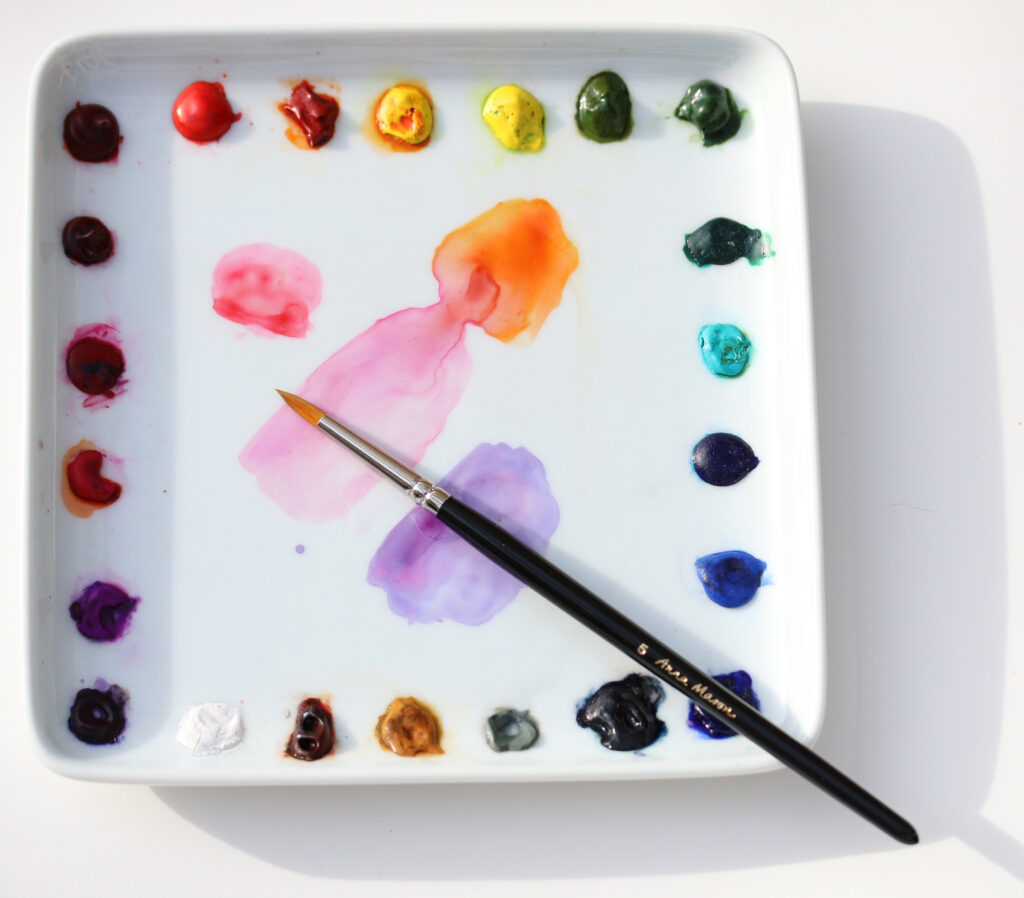
3. The smaller the paintings, the less paint & paper you use
Realistic watercolor takes time. Layering up paint and capturing fine details can’t be rushed. A 12 x 16 inch (31 x 41 cm) painting could take a couple of long days of intensive painting to create (more likely it would be on the easel for a week or two while you paint in shorter stints). So for your hours spent happily painting ‘in the zone’ you’re using really small amounts of paint and paper, keeping your costs really low.
4. The smaller the brushes, the less paint you use
Linked to the above, if you use a small brush to paint with, you’re not scooping up any excess paint each time, so there’s no waste. I’ve also been experimenting with looser watercolour painting on a large scale using large mop brushes recently and those brushes, as their name suggests, suck up a lot of paint at once. You need to mix much more to be able to scoop it up into the brush. So you end up with more waste – on your palette and in your brush.
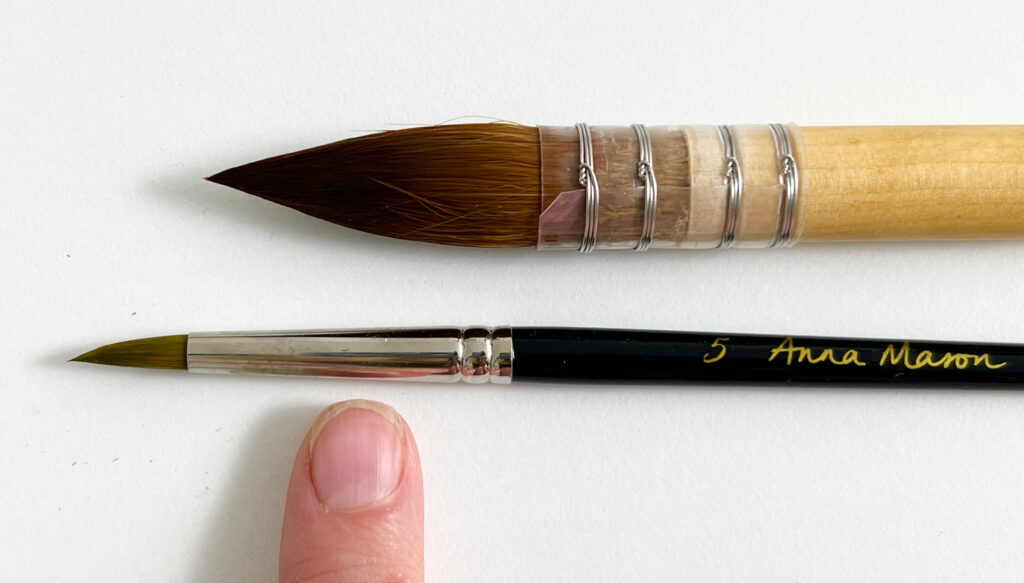
5. Paper is cheaper than canvas or board
There are really good quality watercolour sketchbooks and sketchpads at the 12 x 16 inch size that come in at less than £1 a sheet. Those can be cut in half to tackle 2 or more of most of the tutorials in Nature Studio. With my looser style watercolour experiments I’ve been using sheets of premium paper (22 x 30 inches) that cost around £10 ($12) each. I thought those were super pricey. That was until I saw the price for canvases or boards made for acrylics or oils (often in excess of £50/ $60 for a similar size!). And those still need to be prepped using a paint-like substance called Gesso, which is also pretty expensive.
6. You don’t need much space so you don’t NEED to shell out for a designated studio space.
Using small amounts of paint at once, and on relatively small paintings means theres no mess at all and you can work anywhere you want. For years I worked on the dining table, and then in a carpeted spare bedroom. No need to build that expensive studio in the garden, or to take over an entire room of your home.
This is what Nature Studio members had to say about their experience of the ongoing costs of watercolor painting:
“I started out with super-cheap paper and a watercolor set a neighbor lent me. Nothing high grade. My brushes were nothing special. But it was enough to get me started -and- enough to let me see that I had enough interest to justify an investment in the paper/paints/brushes you recommend.
Watercolor has to be about the least expensive hobby around! And every hobby requires some expenditure! I think some of these paints could last for years and years and years. It’s an investment I am delighted I made.” – Patrice
“Watercolor is the cheapest hobby that I do. I initially bought everything you recommended and the brands you suggested. I still have many of the original paint tubes after years of use. I’m happy with the Winsor Newton Professional paints… I had one previous encounter with watercolor classes where student grade supplies and twice the number of paints were recommended. These were so unsatisfactory that I almost gave up the effort. With your supplies and guidance was able to achieve acceptable results from the beginning. For me the student grade supplies were a waste of money. Thank you for being considerate of our wallets!” – El-lott
“Quality of watercolor supplies are very important. I see it as an investment. Anna has chosen quality products and takes the guess work out of mixing colors. The paints last an amazingly long time.” – Sue
And here’s another tip for SAVING money in the long run:
Buy, borrow or get gifted quality supplies. Don’t waste money on inferior paints or paper.
Often I’ve seen hobby artists frustrated by their inability to get dark, clean and crisp colours in their work. Or to blend their colours well on the paper. And very often this has been the result, not of a lack of skill, but due to inferior supplies. Paper that’s not absorbent enough, or student quality paints which contain more filler and less pigment. So give yourself a chance and use the good stuff. If you don’t you’ll often find yourself re-buying after much frustration, costing you more money in the long run.
If you’re not wanting to buy premium grade paints when you’re just starting out – check out this post where we look at ways you can pull your supplies together without buying new. They include requesting supplies for your birthday or Christmas, starting to learn with a friend who you can share paints with & more..
You can make your hobby pay its way
Here’s a couple of ideas of how this can and does work for people:
1. Sell your paintings
We were asked SO many times about what the copyright rules were on members selling paintings they made from our tutorials that we had to set up some rules. That’s because SO many of our members quickly get to a standard where they want to sell paintings, either on Etsy, or at local art fairs. I was always clear that I wanted members to be able to do that, so we just ask for a written credit (a ‘made following a Nature Studio tutorial’) wherever they display them. Time and time again we get told that this means members can more than make back the cost of their supplies, the cost of their Nature Studio membership, and more. Nice.
2. Paint personalised gifts
If you don’t want to go to the trouble of selling your work, you can do what so many of our members do: paint personalised greetings cards and gifts for their friends and family. These are not only really special for them to receive, but they actually SAVE them money they would have spent on purchasing cards and gifts.
And finally, here’s a great tip one of our members has for gathering supplies in the cheapest way:
“If you regularly buy other products from Amazon (and you are not a Prime member) and your basket does not reach the value to qualify for free delivery, try putting a tube of paint in your basket. Rather than pay the delivery charge, this might tip the basket over the line to qualify for free delivery. You pay the same, but you get a ‘free’ tube of paint paid for by Amazon 😄” – David
In conclusion, I can recommend watercolour, and specifically realistic watercolour painting as one of the very the lowest cost types of painting, and one of the cheapest art hobbies you’ll find.
If you’ve also found watercolour to be highly economical, or you’ve got relevant money saving tips to make your supplies go even further, please do share your experiences in the comments below!

Browse more blog posts
Share this post!
37 Comments
Leave a Comment
Share this post!
Subscribe to blog updates
Blog Updates
The information you provide here will be used only to deliver the email course, along with other relevant updates from me. You can unsubscribe anytime. Click here for our privacy policy.

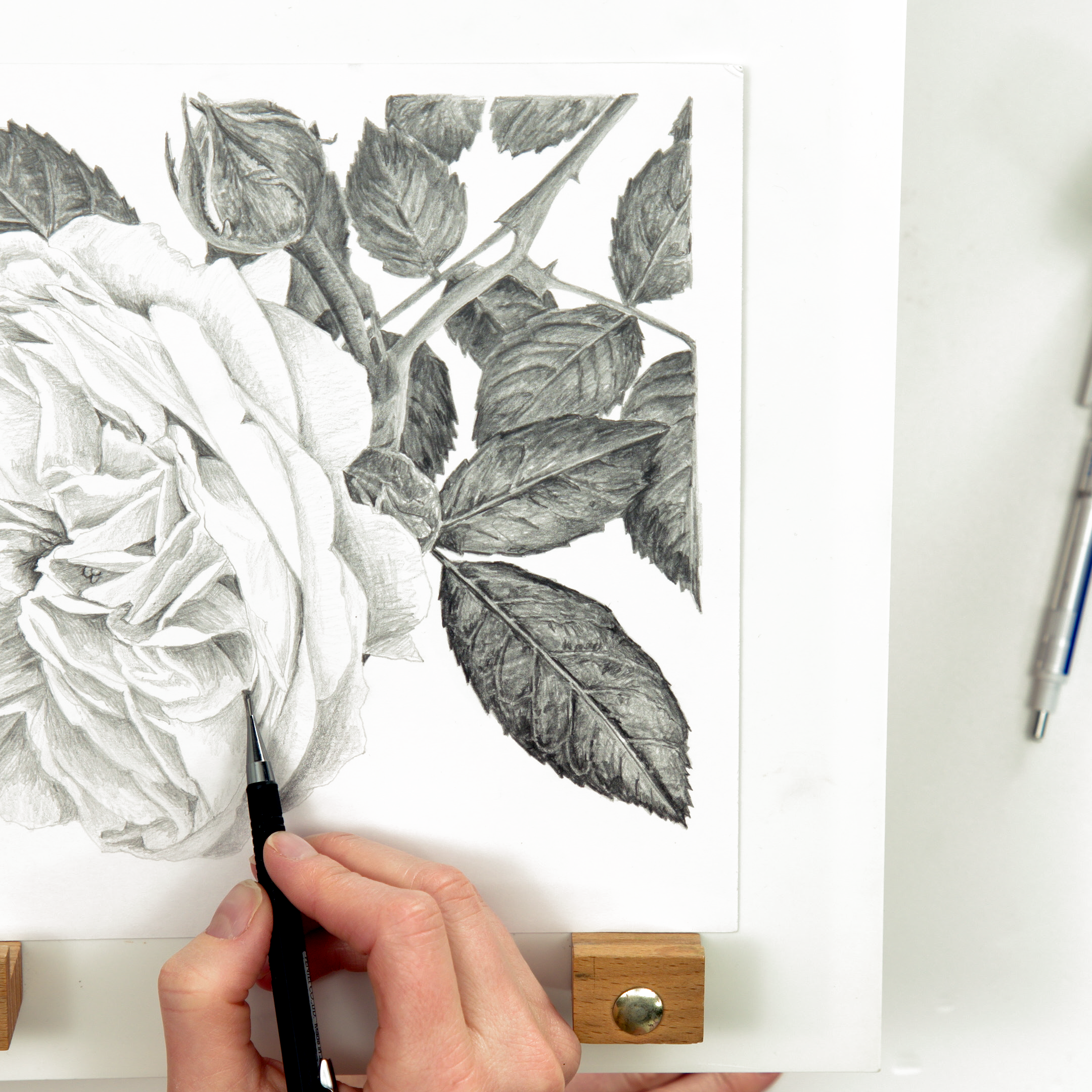
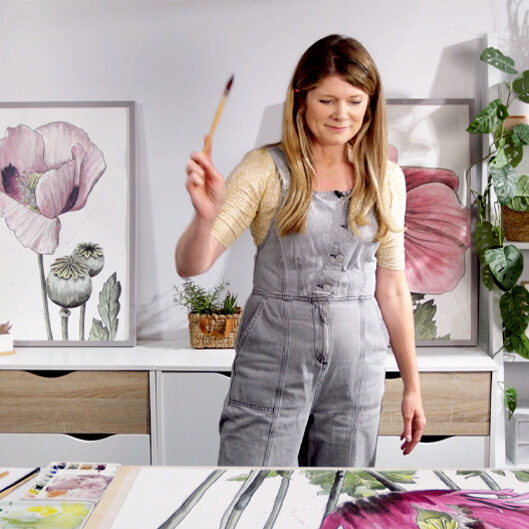
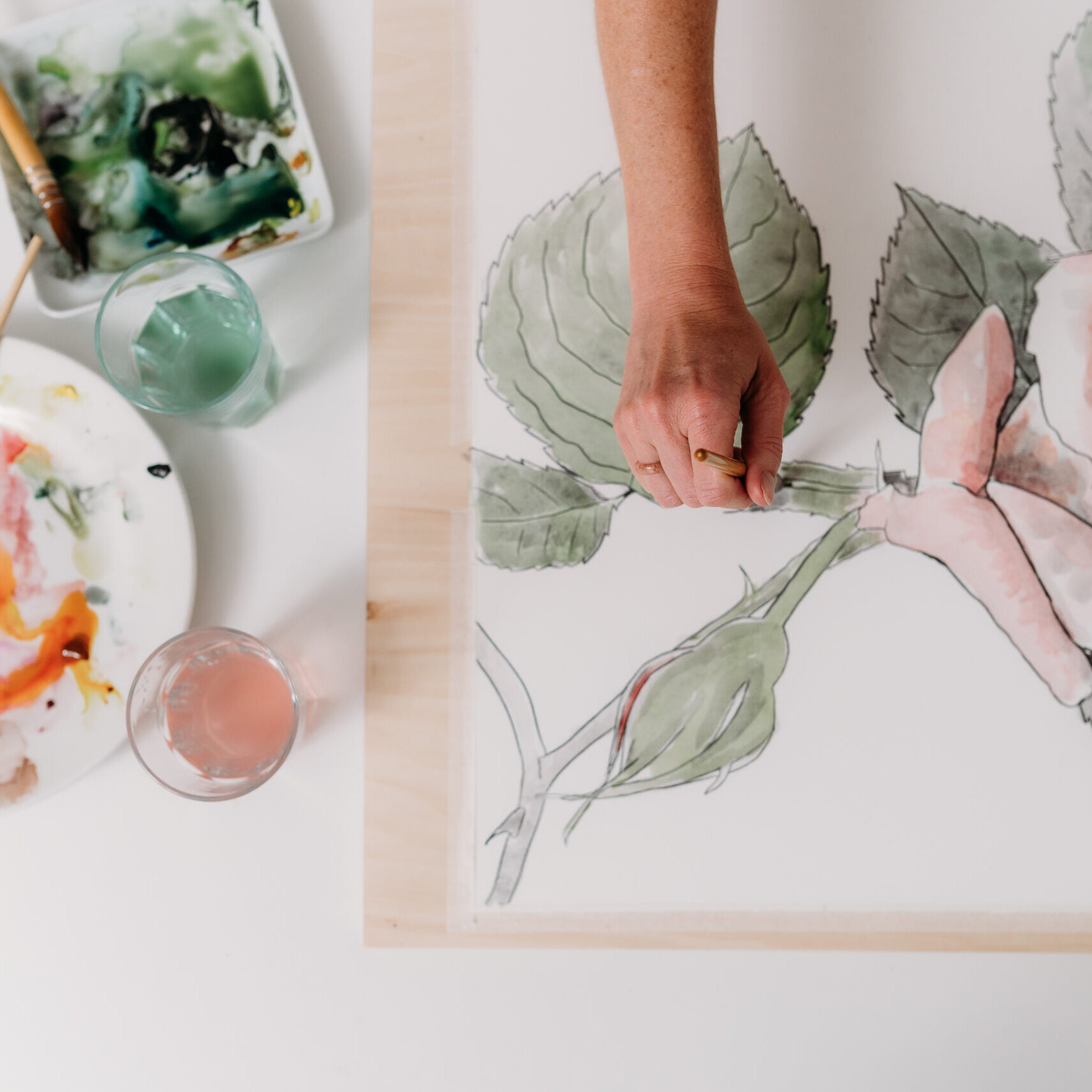
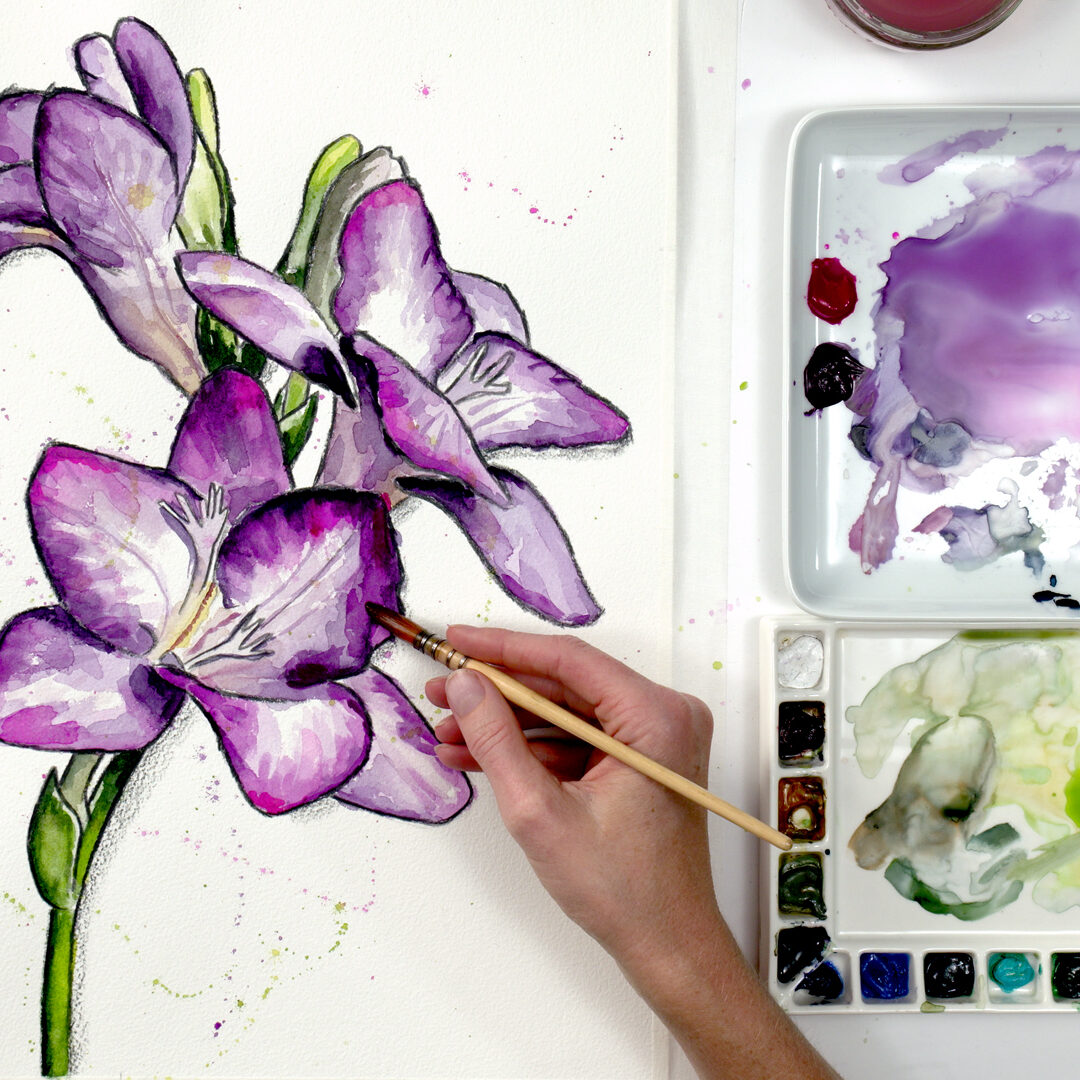
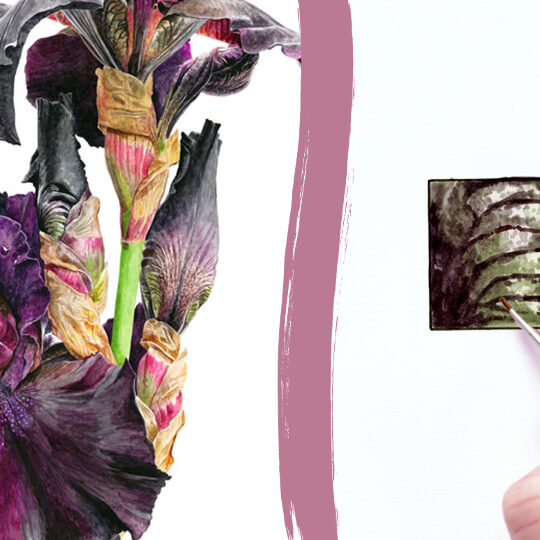
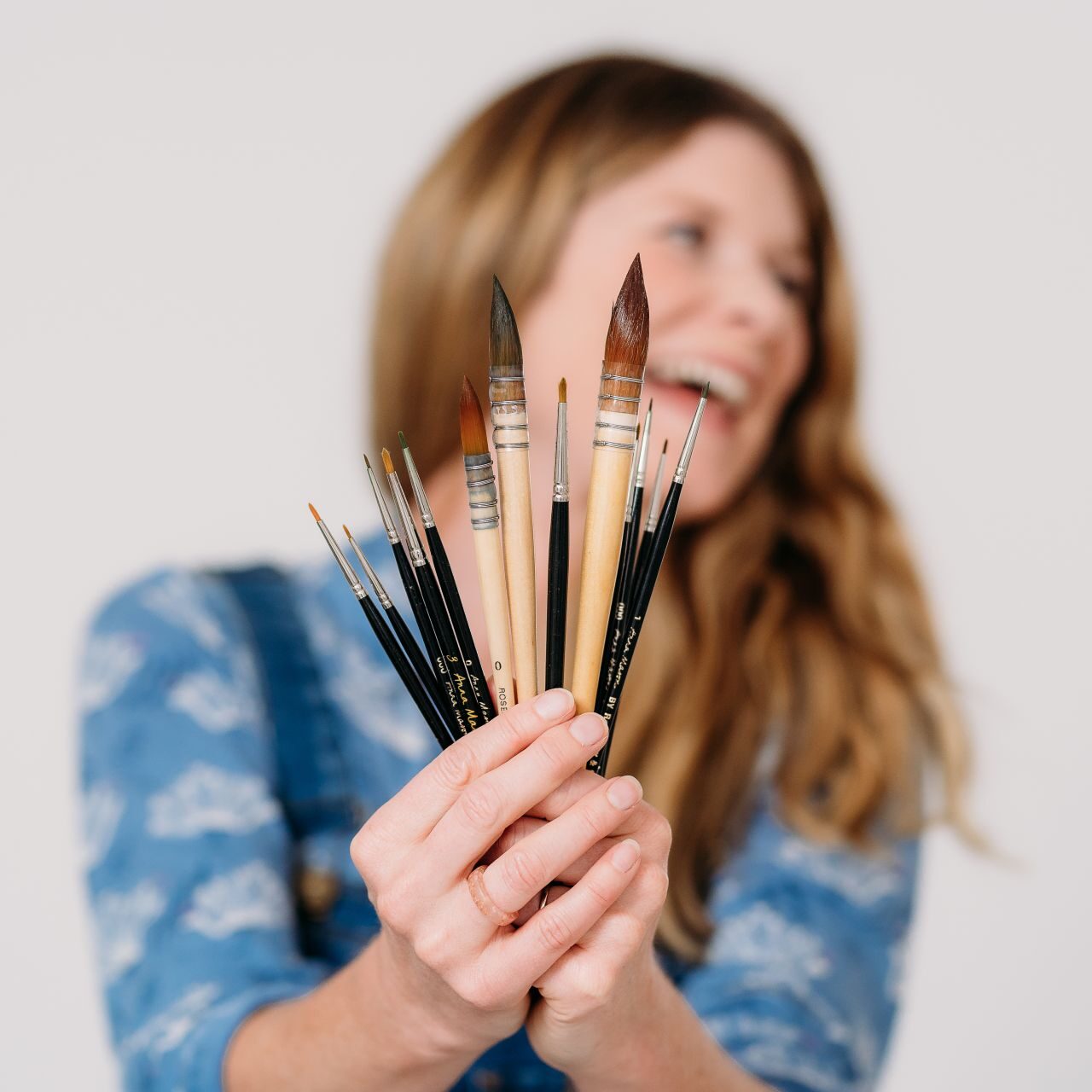
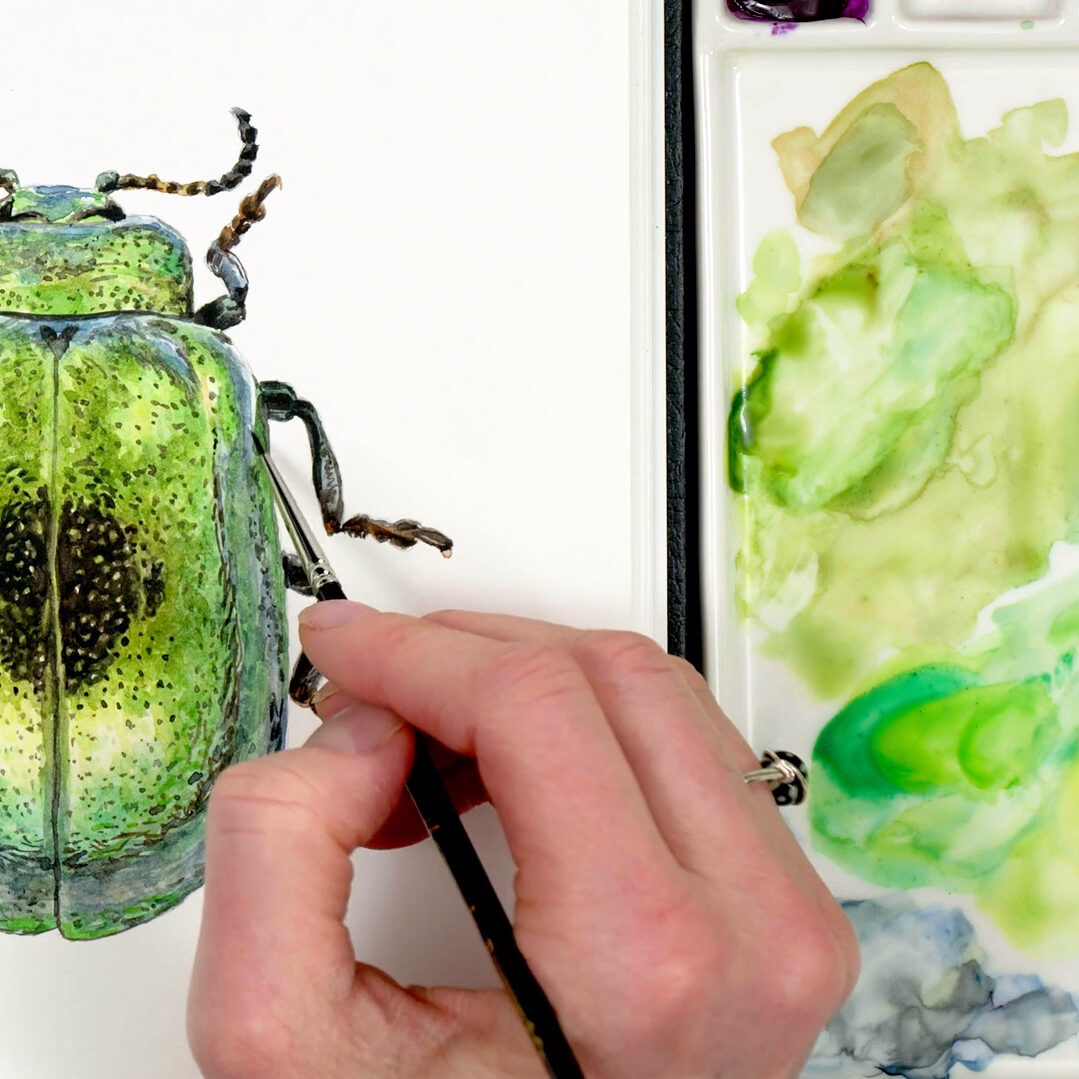
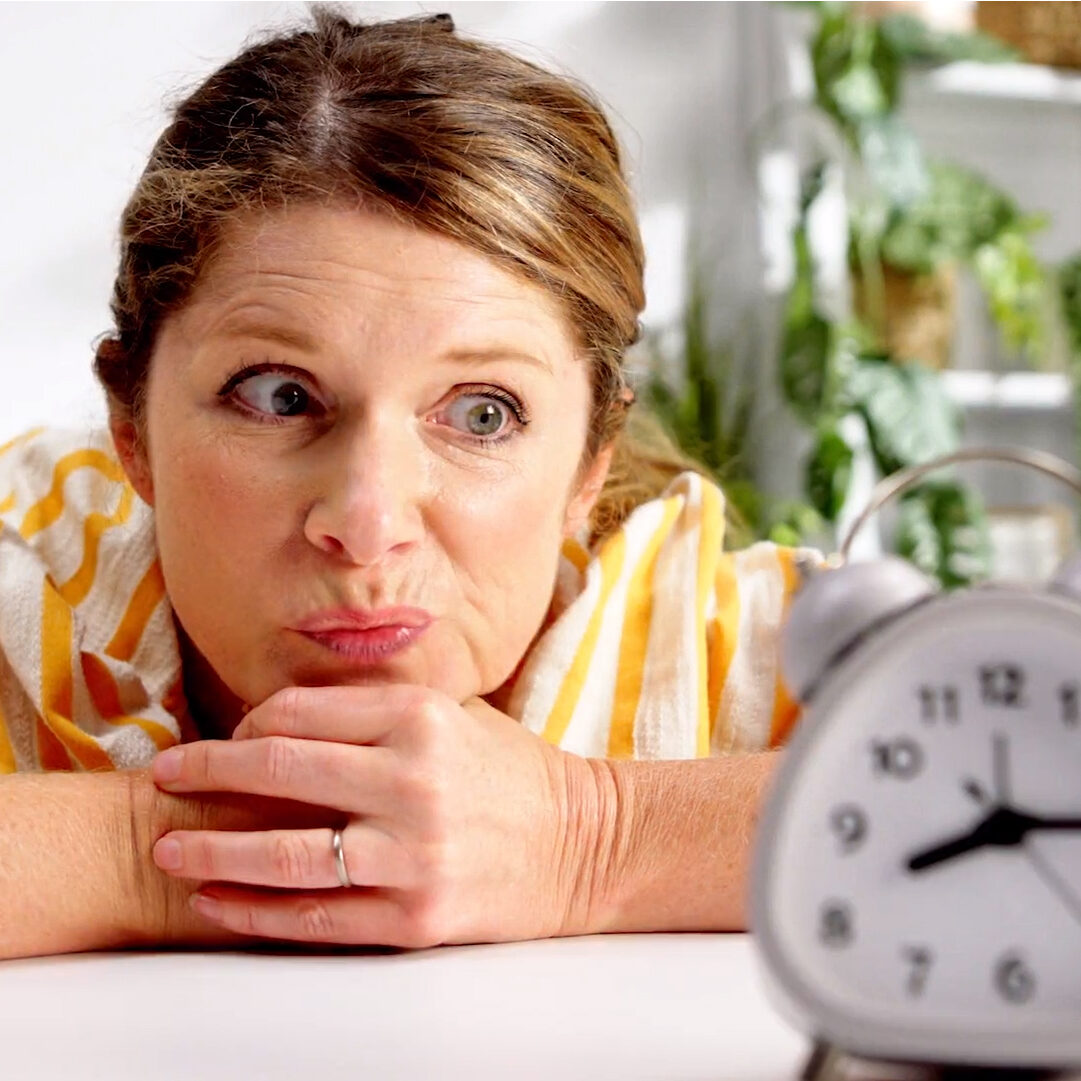
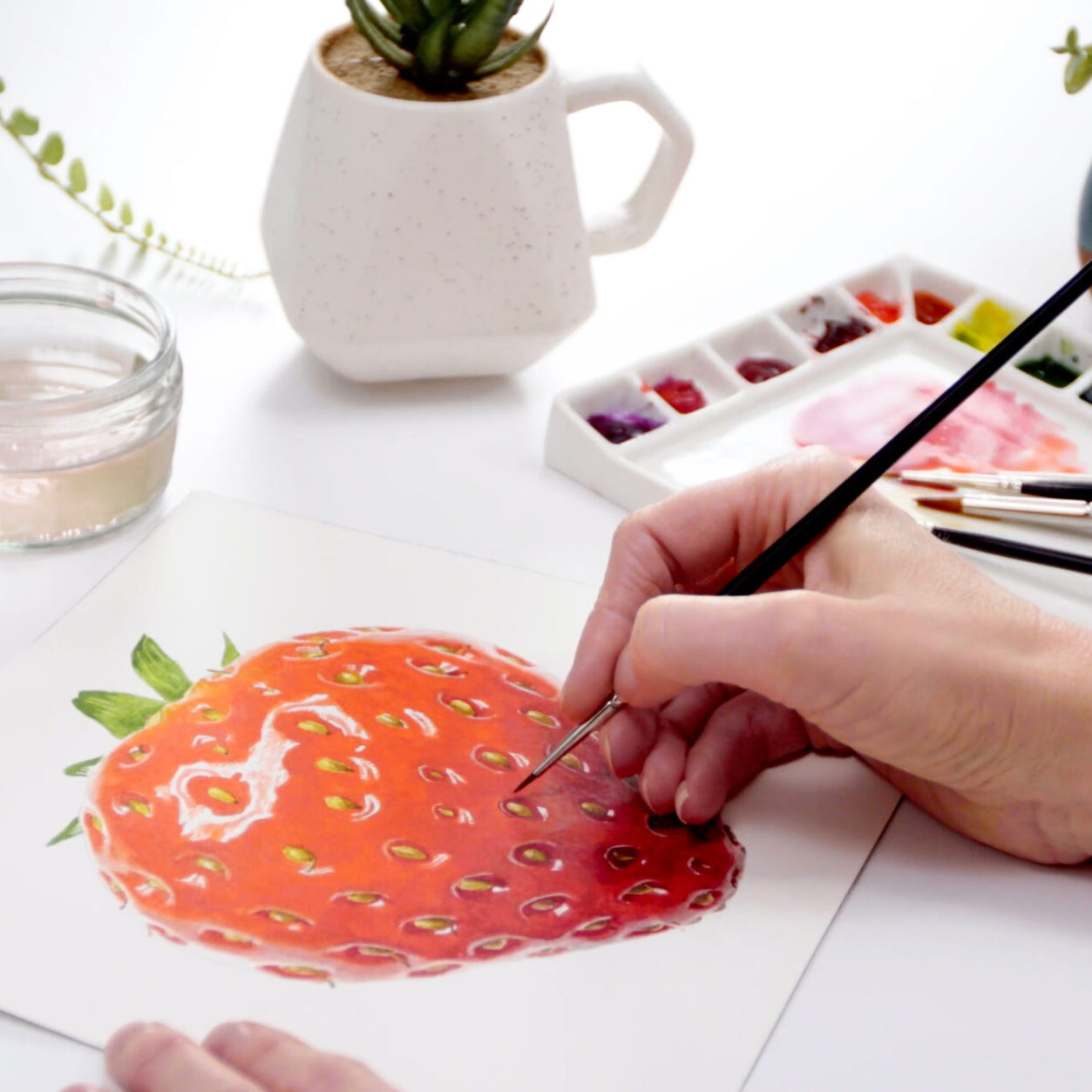
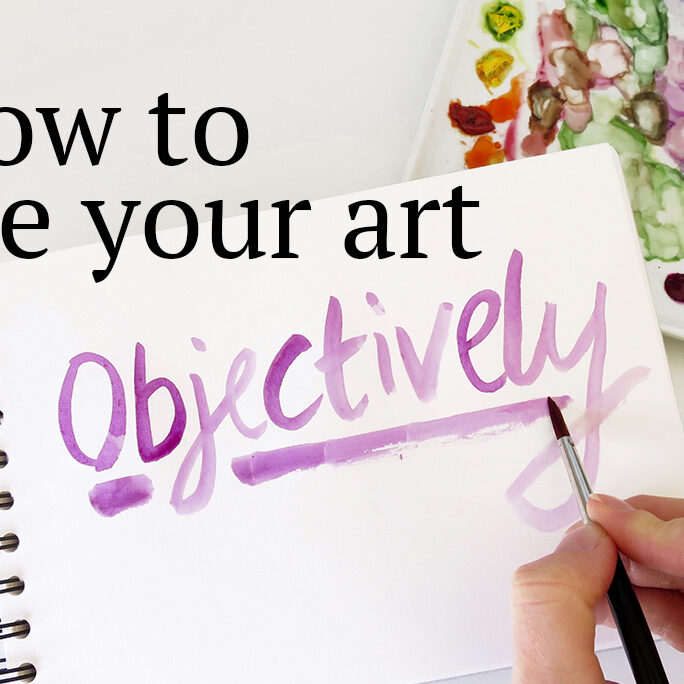

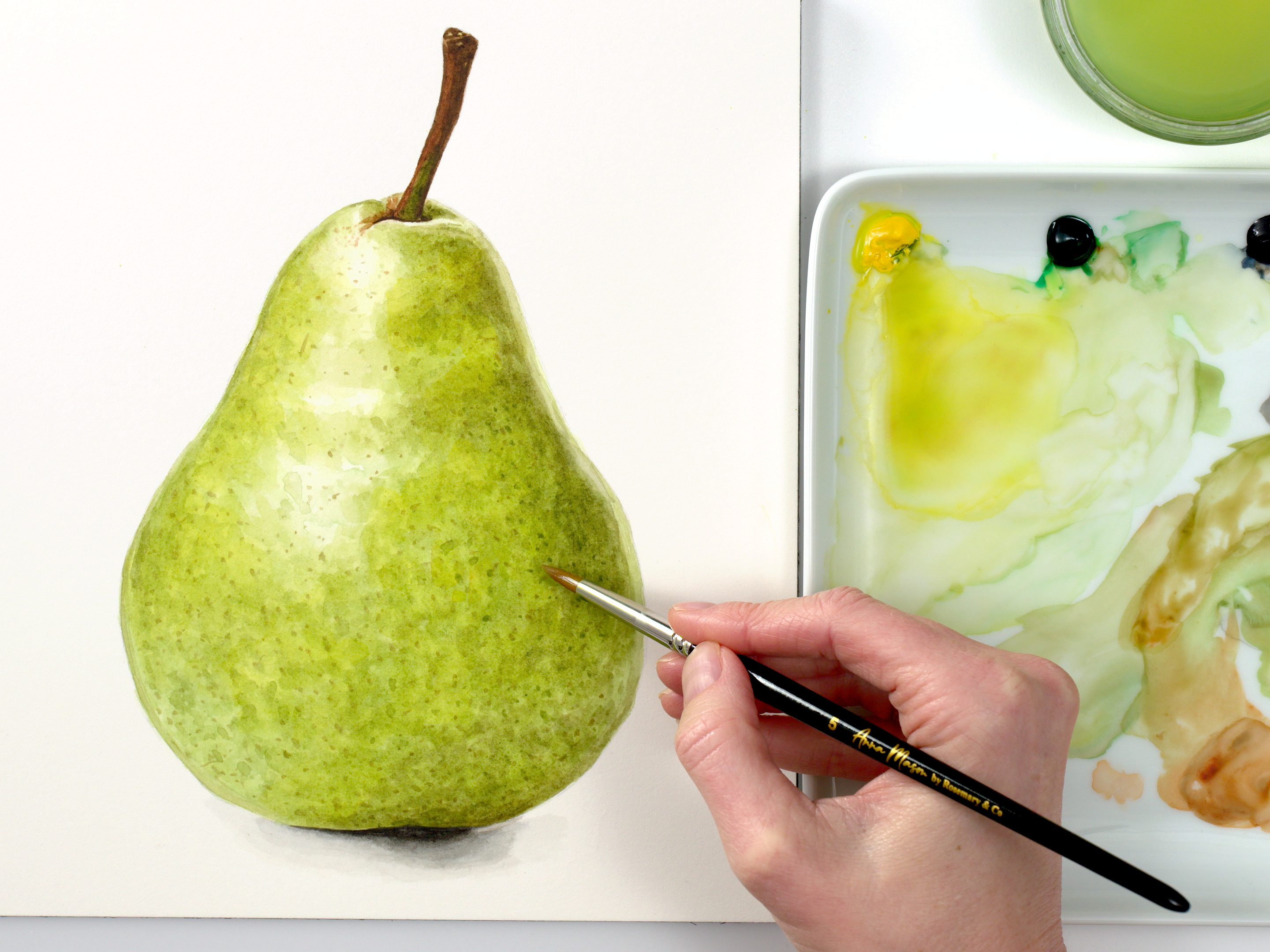

Watercolour is really economical in terms of time as well as money.
There’s almost no setup time, you just add a little water and you can paint immediately. Cleaning up is a dream as well.
Found painting water colour cards for friends save money and they love to receive them too.
Knowing how to mix colors allows you to purchase less tubes of paint in some cases. Watercolor is the least expensive hobby I have tried, and I never get bored. Even if I don’t have something specific to paint, I mix colors, try practicing techniques, and try abstract painting. For most practice sessions, I use cheap paper. I have sat down with my grand children, and we do painting with the cheapest paints possible, all having a great and inspiring time. It is all about the journey.
The journey, the process whatever it is, just going through the steps is so enjoyable. Lesss enjoyable is when I focus on the end result, a painting resembling the reference photo. If that happens I am surprised and pleased. But then want to start all over. I have noticed that in all of my hobbies. As a knitter, I often tear out and start something new just to knit.
I just shared with a Watercolor Facebook group I follow in the US. There’s always a post on using cheap paper and student grade ( or lower😳 ) paints. I think your insights on why watercolor is such an enjoyable and affordable hobby is spot on. Plus they’re easier to travel with. About 10 years ago my oil painting teacher flew to Greece to paint and couldn’t take her paints and turpenoid inside the cabin, she had to either ship those or check them at a much higher cost. I’ve never had an issue with my watercolor in my carryon bags.
My art room is slowly, and I mean slowly getting back in shape and organized. But being neat and tidy doesn’t come easy to me, but I’m soldiering on!
When I started watercolors, I decided to take a lesson from my color printer. I bought three tubes of paint in the colors that closest matched the printer’s ink cartridges and learned to mix any color I wanted from those three tubes. It really taught me how to better SEE what goes into the different colors.
Wnat a clever idea!
Excellent idea. One famous painter wrote ” There are hundreds of shades of green paint on the market but never the one you actually want “
LOL, that’s very true. Although for botanicals, Permanent Sap Green is a great base and usually only needs a little of another colour.
I’ve been painting many years using watercolours, my most favourite medium of all.
I’ve always used the best materials, saves disappointments: Windsor Newton Professional artist watercolour paints & their 100% Cotten HP watercolour paper.. They work out super economical as Anna said, especially if they are on offer, worth researching prices.
.I’ve often had tubes of old paint go dry. To extract most of the paint, I’ve experimented with hot water just off the boil, poured into an old mug/cup standing the tube with the top above water & leave until the water cools repeat process until the paint becomes pliable agin. With an old blunt knife, squeeze the paint out into a paint pan, it will dry again quickly but at least you’ve saved money by doing this & it will last another year or two or more. It can be time consuming but worth it & Oh, the delightful feeling of achievement! 😊
Happy painting! 🎨
Ann
HI just in case where tubes of watercolour paint is concerned if you have difficulty where the tubes have got dried up and the paint stuck in the tube – then just put the tubes in hot water and after a while you will be able to use the paint as the heat will soften up the contents in the tube etc. i suspect everyone knows about this particular tip but on the other hand …..
Great idea. I often stick a tube into water if I a m not able to remove the cap. Thanks for the hot water tip.
I’ve been doing watercolor over 20 years and didn’t know this! I’ve cut tubes open before and rewet them. I’ll definitely try this!
Absolutely yes very economical. Using small amounts of paint on quality paper has helped me using your tutorials to produce amazing paintings. The realistic style and layering technique you teach is by far the most economical use of paints I e experienced. While I thoroughly enjoy loose watercolor style and choose it often to express myself, paining with a select palette using the colors you outline has increased the joy I feel when painting. I have been able to sell my art! Thank you!
Because we house and pet sit almost full time and therefore travel a lot. Watercolor is the only thing that works for me. I made up a tray of paints (in an old student quality set) take a few favorite brushes and one or two small pads. This allows me to do portraits of pets or tackle some of the tutorials. It’s a win win and something I would never be able to do with acrylics or oils.
Never underestimate 5ml of water colour paint.. Yes it goes a loooong way…. water colour is so convenient to carry everywhere.. basic primary colours can mix and match to create different hues.. Fantastic !! I cannot agree more Anna… Let’s paint watercolour.. but this does not of course stop us from trying other medium too…
I recommend working with a warm/cool palette because 6 tubes will make many colors…and encourage mixing. Daniel Smith has a Starter Set with six 5ml tubes for $35 or so.
I learned about warm and cool palette after my daughter had gifted me with a 12-tube set that lacked a cool yellow and a cool red. Needless to say those were colors I added because I paint flowers some of the time. I have yet to try one of Anna’s lessons as I am not sure I that I have the patience for all those details. I do admire hyper realistic art and I recommend the classes when someone is looking for this sort of painting. I didn’t know that you allowed students to sell with the proper attribution; that is so kind of you.
The only expensive part of painting in watercolor is the final aspect of framing it. I’ve tried to cut costs by learning to frame them myself but more and more the frames in stores are outfitted with acetate and not glass. When I first started painting watercolor years ago, an instructor told us never to frame using plastic instead of glass. It has stuck with me but I wonder if the acetate sheets many frames now come with are of a better quality than way back then or if their use is just a cost cutting aspect for the manufacturers of ready made frames. I’ve tried acrylics because of the modern idea of wrap around canvases that do not need to be framed to be hung. But as Anna points out, overall, acrylics require a much bigger investment in supplies to paint with than watercolors do. Also, we moved to a house with an on site septic system and the thought of pouring acrylic paint down the drain led to nightmares about it hardening up in the plumbing or drain field and requiring a massive rebuild ($$$) of the entire septic system. So it was back to watercolors for me! Drying time is another consideration. I’ve never had problems transporting watercolors when I travel and have no idea how wet acrylic or oil paintings are easily packaged (and cheaply) transported.
Right now I have many unframed watercolors and besides storing them flat I wonder if anyone out there has suggestions on how to cut the cost of framing. Also, I was given some old student grade watercolors and wonder if I should just throw them out (I’ll never use them and the tubes were hard). I’m not sure that donating something that I consider inferior is appropriate although it would get them out of my house. PS. I love that Yvonne paints animal portraits in watercolors when she house sits.
Joyce, I too had acquired new high quality watercolors and wondered what to do with my dried up student grade tubes from earlier years. Then I decided to use them in an introductory watercolor lesson with my school age art students. When they looked at their palettes, they seemed to think I’d made a mistake. Then I showed them that those little chunks of very old paint could actually be activated with a drop or two of water and used. The students loved this! Maybe you could do something similar.
If you know of any young couples with children Joyce, think about donating them, children just enjoy painting, they don’t have any preferences…. Parents would be so pleased to receive your gift too. Just a thought.
As an alternative to framing your watercolors, you may consider mounting them on a cradle painting panel and waxing them. Many videos are available to show you how to do it.
I am curious about your alternative framing idea and waxing the painting. Please send me your website: [email protected]
Thanks for sharing this Marie – I hadn’t been aware of this but had used varnish before. I’ve now bought some to test out. Great tip. And Donna, you can google ‘How to wax a watercolor painting’ and you’ll find demos.
I have found it quite an expensive outlay on the initial spend as I bought cheap paper and student grade watercolour paints. I learned it was better to buy artists quality paint paper and brushes as this meant tiny amounts of paint were used, the brushes gave a better outcome and the quality paper meant I could ‘fix’ mistakes easier. My best economical tip is to buy Daniel Smith Watercolour sticks. These are the same as his paint formulas, cost a little more but I get 5 half pans out of 1 stick. They are so pigmented, so a tiny amount goes a long, long way. Getting dot cards of his is also a great way to try other colours but they last forever too and make up a great small travel kit palette.
I agree with you Liz. Dot cards are a great investment. I have the 266 Daniel Smith dots card. I swatched all the colors on my favorite watercolor paper and keep them in a binder. When I am looking at buying a new color, I refer to this catalog to decide if I want to invest in a 5ml, 15 ml, or a stick of a specific color. That prevents me from buying colors that I will rarely use or not use at all
I am a huge advocate for supporting local, independent businesses but on occasion, I will go to a Michaels store (in the USA) and purchase picture frames for what I’ve painted. Once I became a “member,” and spend a certain amount of money, Michaels will email me a $5 coupon towards my next purchase. That means $5 of free merchandise each time I spend that $$ limit. Thankfully, watercolor paints are inexpensive, so I get a new tube of paint for free! I know each franchise can have different rules and I don’t know if that incentive program applies to online purchases, so if you don’t live near a Michaels store, you’ll want to do some research to see if you can access that offer. Happy painting!
Thank you for sharing wonderful information.
Never underestimate 5ml of water colour paint.. Yes it goes a loooong way…. water colour is so convenient to carry everywhere.. basic primary colours can mix and match to create different hues.. Fantastic !! I cannot agree more Anna… Let’s paint watercolour.. but this does not of course stop us from trying other medium too…
Thank you, Anna for such a lovely post. It’s an eye-opener for all of us who think water-colour is expensive. Initially I used to feel that too. I still use local colours that are available in India. But I do feel like investing in professional paints to create original art work. The tubes last pretty long so it’s a good investment. I haven’t been able to afford Arches paper yet. But now I think that if I am able to create art and sell it, I would be able to recover all the costs. Plus, I now think that I can still buy Arches paper as single sheets instead of an entire pad.
More than anything, I love the purity and simplicity of this medium. It has a very calming and soothing effect on the mind. It does take practice to learn the different techniques, but that is the case with any other medium as well.
I love nature and so care a lot about my art being eco-friendly. After some research, I’ve found water-colour to be one of the most sustainable. We can recycle our art without causing much damage.
Thank you for always inspiring 🙂 xoxo
Thanks Manali – yes the sustainability aspect is really important too and I plan to research that some more and post about that too.
Thanks for sharing Anna! I had not realized how much cheaper watercolour is in the all-around comparaison though i must confess whenever I saw the prices of oils I always felt glad I was buying watercolor instead. Looking forward to read more money- saving tips from the community. On my side, I recently created an Instagram account dedicated only to post artwork and just did my first sale!! Many of my friends have asked either for paintings on a subject they want or are interested in buying some of the work I have posted in just one week. I ‘m not the social media type of person, so I have 15 followers 🤣but yet, my family and friends liked the paintings and want to buy them 🙂 And as Anna said, the paintings make a very special gift as well, since we enjoy the process of painting, they receive something unique and you don’t spend money on gifts. I have done that myself and I’ve seen among many expensive gifts, my painting got special love for being a personalized gift 😊
Congratulations on your first sale! And the paintings you’ve been giving sound very well appreciated.
I love these ideas, and have yet to try out the dot cards. Watercolor painting is very relaxing and you can do it practically everywhere without having to set up a studio. I recently was painting in a park and used the water from a nearby pond 😉
That’s lovely to hear Hetty – yes it’s the ideal out-and-about paint!
Thankyou so much for that wonderful tip..I often get stuck with the same issue .Useful and great.
[…] is hands down the most convenient and cost-effective medium to paint with and it gives you the best chance of success for developing your artistic […]